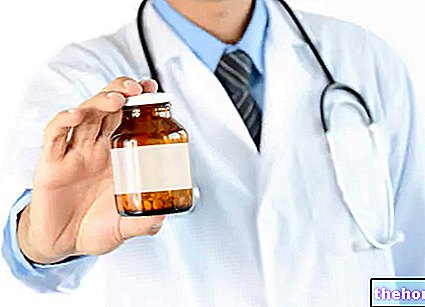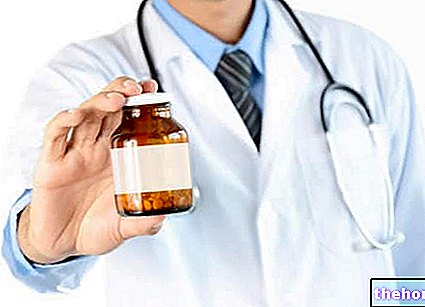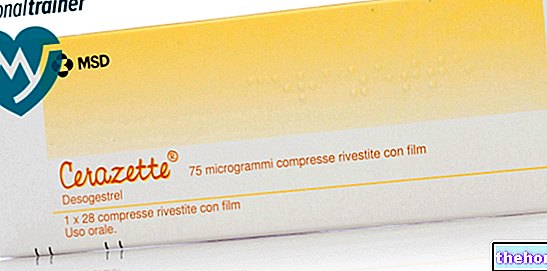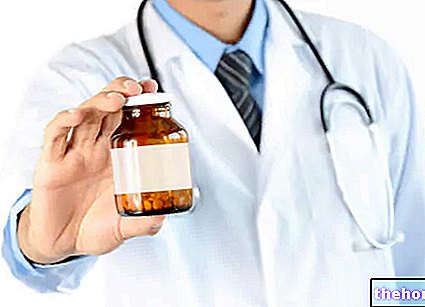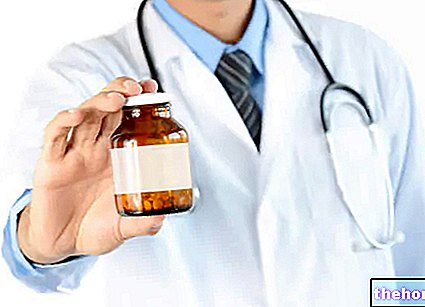Active ingredients: Sulodexide
VESSEL® 250 ULS Soft capsules
VESSEL® 600 ULS / 2ml Solution for injection
Indications Why is Vessel used? What is it for?
PHARMACOTHERAPEUTIC CATEGORY
Antithrombotics / heparinics.
VESSEL contains Sulodexide, a glycosaminoglycan with strong antithrombotic activity both on the arterial and venous side.
Numerous clinical studies conducted by administering the product parenterally and orally, show that the antithrombotic activity of Sulodexide is due to the dose-dependent inhibition of some coagulation factors including, first of all, the X-activated factor, while the interference with the Thrombin, remaining at insignificant levels, generally avoids the consequences of an anticoagulant action.
The antithrombotic action is also supported by the inhibition of platelet adhesiveness and by the activation of the circulating and wall fibrinolytic system.
Furthermore, Sulodexide normalizes the viscosimetric parameters which are usually found altered in patients with vascular pathologies at thrombotic risk: this activity is mainly exercised through the reduction of fibrinogen values.
The pharmacological profile described above for Sulodexide is completed by the normalization of the altered lipid values, obtained by activating the lipoproteinlipase.
THERAPEUTIC INDICATIONS
Chronic venous ulcers.
Contraindications When Vessel should not be used
Hypersensitivity to the active substance or to any of the excipients, towards heparin and heparinoids.
Diathesis and hemorrhagic diseases.
Precautions for use What you need to know before taking Vessel
In all cases in which treatment with anticoagulants is in progress, it is advisable to periodically check the blood coagulation parameters.
For precautionary reasons, its use during pregnancy is not recommended.
Interactions Which drugs or foods can modify the effect of Vessel
Since Sulodexide is a heparin-like molecule, it can increase the anticoagulant effects of heparin itself and of oral anticoagulants if administered simultaneously.
Sulodexide, being an acid polysaccharide, if administered in extemporaneous associations can react by complexing with all the basic substances. The substances in common use that are incompatible in the impromptu associations for infusion are: vitamin K, vitamins of the B complex, hydrocortisone, hyaluronidase, calcium gluconate, quaternary ammonium salts, chloramphenicol, tetracyclines, streptomycin.
Warnings It is important to know that:
Keep out of reach of children.
Dose, Method and Time of Administration How to use Vessel: Posology
VESSEL® 250 ULS SOFT CAPSULES: 1 capsule twice a day, away from meals.
VESSEL® 600 ULS / 2 ML SOLUTION FOR INJECTION: 1 ampoule per day, intramuscularly or intravenously.
As a guideline, it is recommended to start therapy with the ampoules and, after 15-20 days, continue with the capsules for 30-40 days. The complete therapeutic cycle must be repeated at least twice a year.
In the opinion of the physician, the dosage can be varied in quantity and frequency.
Side Effects What are the side effects of Vessel
Occasionally reported:
Soft capsules: gastrointestinal disorders with nausea, vomiting and epigastralgia.
Ampoules: pain, burning and hematoma at the injection site.
Furthermore, in rare cases, there may be sensitization with skin manifestations or in different locations.
Compliance with the instructions contained in the package leaflet reduces the risk of undesirable effects.
It is important to inform the doctor or pharmacist of any undesirable effect, even if not described in the package leaflet.
Expiry and Retention
Store at a temperature not exceeding 30 ° C.
The validity period is intended for the product in intact packaging, correctly stored.
Warning: do not use the medicine after the expiry date indicated on the package.
Composition and pharmaceutical form
COMPOSITION
VESSEL ® 250 ULS SOFT CAPSULES
One capsule contains: Active ingredient: Sulodexide 250 ULS. Excipients: Sodium laurilsarcosinate, silicon dioxide, triacetin, gelatin, glycerol, ethyl sodium parahydroxybenzoate, propyl sodium parahydroxybenzoate, titanium dioxide (E 171), red iron oxide (E 172)
VESSEL ® 600 ULS / 2 ML SOLUTION FOR INJECTION
One vial contains: Active ingredient: Sulodexide 600 ULS. Excipients: Sodium chloride, water for injections FORM
PHARMACEUTICAL AND CONTENT
Soft capsules of 250 ULS - blister of 50 capsules
600 ULS / 2 ml solution for injection - box of 10 ampoules
Source Package Leaflet: AIFA (Italian Medicines Agency). Content published in January 2016. The information present may not be up-to-date.
To have access to the most up-to-date version, it is advisable to access the AIFA (Italian Medicines Agency) website. Disclaimer and useful information.
01.0 NAME OF THE MEDICINAL PRODUCT
VESSEL
02.0 QUALITATIVE AND QUANTITATIVE COMPOSITION
Soft capsules: sulodexide 250 ULS.
Vials: sulodexide 600 ULS.
For excipients, see 6.1.
03.0 PHARMACEUTICAL FORM
Soft capsules.
Injectable solution.
04.0 CLINICAL INFORMATION
04.1 Therapeutic indications
Chronic venous ulcers.
04.2 Posology and method of administration
VESSEL® 250 ULS SOFT CAPSULES: 1 capsule twice a day, away from meals.
VESSEL® 600 ULS / 2 ML SOLUTION FOR INJECTION: 1 ampoule per day, for intramuscular or intravenous administration.
As a guideline, it is recommended to start therapy with the ampoules and, after 15-20 days, continue with the capsules for 30-40 days. The complete therapeutic cycle must be repeated at least twice a year.
In the opinion of the physician, the dosage can be varied in quantity and frequency.
04.3 Contraindications
Hypersensitivity to the active substance or to any of the excipients, towards heparin and heparinoids. Diathesis and bleeding diseases.
04.4 Special warnings and appropriate precautions for use
Due to its pharmaco-toxicological characteristics, VESSEL does not present particular precautions for use. However, in cases where treatment with anticoagulants is also underway, it is advisable to periodically check the blood coagulation parameters.
Keep out of reach of children.
04.5 Interactions with other medicinal products and other forms of interaction
Since Sulodexide is a heparin-like molecule, it can increase the anticoagulant effects of heparin itself and of oral anticoagulants if administered simultaneously.
04.6 Pregnancy and breastfeeding
For precautionary reasons, its use in pregnancy is not recommended, even if fetal toxicity studies have not shown embryo-fetal-toxic effects.
04.7 Effects on ability to drive and use machines
VESSEL has no or negligible influence on the ability to drive or use machines.
04.8 Undesirable effects
Occasionally reported:
Soft capsules: disorders of the gastrointestinal tract with nausea, vomiting and epigastralgia.
Vials: pain, burning and bruising at the injection site.
Furthermore, in rare cases, there may be sensitization with skin manifestations or in different locations.
04.9 Overdose
The bleeding accident is the only effect obtainable from an overdose. In case of haemorrhage, 1% protamine sulphate (3 ml i.v. = 30 mg) must be injected, as used in "heparinic haemorrhages".
05.0 PHARMACOLOGICAL PROPERTIES
05.1 Pharmacodynamic properties
The activity of Sulodexide is expressed through a marked antithrombotic action both on the arterial and venous side.
Pharmacotherapeutic group: Sulodexide is classified as a heparin antithrombotic drug
ATC code: B01AB11.
Mechanism of action
Numerous clinical studies conducted by administering the product parenterally and orally, show that the antithrombotic activity of Sulodexide is due to the dose-dependent inhibition of some coagulation factors including, first of all, the X-activated factor, while the interference with the Thrombin, remaining at insignificant levels, generally avoids the consequences of an anticoagulant action.
The antithrombotic action is also supported by the inhibition of platelet adhesiveness and by the activation of the circulating and wall fibrinolytic system.
Furthermore, Sulodexide normalizes the viscosimetric parameters which are usually found altered in patients with vascular pathologies at thrombotic risk: this activity is mainly exercised through the reduction of fibrinogen values.
The pharmacological profile described above for Sulodexide is completed by the normalization of the altered lipid values, obtained by activating the lipoproteinlipase.
Pharmacodynamic effects
Studies aimed at highlighting any other effects, in addition to those described above, which are the basis of the therapeutic efficacy, have allowed to confirm that the administration of VESSEL does not show anticoagulant effects.
05.2 Pharmacokinetic properties
to) general characteristics of the active ingredient
Sulodexide exhibits demonstrable absorption across the gastrointestinal barrier based on pharmacodynamic effects following oral, intraduodenal, intraileal and rectal administration of fluorescein-labeled Sulodexide in the rat. Dose-effect and dose-time correlations have been demonstrated in rats and rabbits following administration by the routes listed above. The labeled substance initially accumulates in the cells of the intestine and is then released from the serum pole into the systemic circulation. The concentration of the radioactive substance significantly increases over time in the brain, kidney, heart, liver, lung, testis, plasma.
Pharmacological tests performed in humans with i.m. and i.v. administrations have shown linear dose-effect relationships. The metabolism was mainly hepatic and excretion mainly urinary.
The absorption after oral administration in man, studied with the labeled product, showed that a first blood peak occurs at 2 hours and a second peak between the fourth and sixth hour, after which the drug is no longer determinable in the plasma and reappears around the twelfth hour, thus remaining constant until around the forty-eighth hour. This constant blood value found after the twelfth hour is probably due to the slow release of the drug by the uptake organs and in particular by the endothelium of the vessels. Excretion urinary: using the labeled product, an average urinary excretion of 55.23% of the administered radioactivity was recorded, in the arc of the first 96 hours. This elimination shows a peak around 12 hours, with an average urinary value, in the interval 0 -24 hours, by 17.6% of the administered dose; a second peak around the 36th hour, with urinary elimination between 24-48 hours of 22% of the dose; a third peak around the 78th hour with an elimination of about 14.9% in the period 48-96 hours. After 96 hours the radioactivity in the collected samples is no longer detectable. Fecal excretion: the total radioactivity recovered in the faeces is 23% in the first 48 hours, after which the labeled substance is no longer detectable.
b) characteristics of particular interest to the patient
The therapeutic activity of VESSEL has always been evaluated in patients suffering from vascular pathologies with thrombotic risk, both on the arterial and venous side.
The drug has shown particular efficacy in elderly patients and in diabetic patients.
05.3 Preclinical safety data
Acute toxicity: administered to mice and rats, it does not cause any toxic symptoms up to doses of 240 mg / kg per os; the LD50 in mice is> 9000 mg / kg / os and 1980 mg / kg / i.p .; in rats the LD50 is always> 9000 mg / kg / os and 2385 mg / kg / i.p ..
Subacute toxicity: administered for 21 days os at a dose of 10 mg / kg in the dog, it did not give rise to phenomena of intolerance, to changes in the haematochemical parameters and to anatomical-pathological modifications of the main organs.
Chronic toxicity: administered orally for 180 days at a dose of 20 mg / kg in rats and dogs, at the end of the treatment it did not show any significant changes in the haematological picture, in the urinary and fecal parameters and in the histological parameters of the main organs.
Fetal toxicity: in fetal toxicity tests in rats and rabbits (25 mg / kg per os) it was found to have no embryo-fetal-toxic effects.
Mutagenesis: it is devoid of mutagenic activity in the following tests: Ames; unscheduled reparative synthesis of DNA in human lymphocytes (UDS); nondisjunction in Aspergillus; crossing over in Aspergillus; methionine suppressants in Aspergillus.
06.0 PHARMACEUTICAL INFORMATION
06.1 Excipients
VESSEL® 250 ULS SOFT CAPSULES
Sodium laurilsarcosinate, silicon dioxide, triacetin, gelatin, glycerol, ethyl sodium parahydroxybenzoate, propyl sodium parahydroxybenzoate, titanium dioxide (E 171), red iron oxide (E 172).
VESSEL® 600 ULS / 2 ML SOLUTION FOR INJECTION
Sodium chloride, water for injections
06.2 Incompatibility
Sulodexide, being an acid polysaccharide, if administered in extemporaneous associations can react by complexing with all the basic substances. The substances in common use that are incompatible in the impromptu associations for infusion are: vitamin K, vitamins of the B complex, hydrocortisone, hyaluronidase, calcium gluconate, quaternary ammonium salts, chloramphenicol, tetracyclines, streptomycin.
06.3 Period of validity
5 years.
06.4 Special precautions for storage
Store at a temperature not exceeding 30 ° C.
06.5 Nature of the immediate packaging and contents of the package
VESSEL® 250 ULS SOFT CAPSULES
Cardboard box containing 2 blisters of 25 soft capsules each.
VESSEL® 600 ULS / 2 ML SOLUTION FOR INJECTION
Cardboard box containing polystyrene tray of 10 ampoules of solution for injection in dark glass.
06.6 Instructions for use and handling
No special instructions.
07.0 MARKETING AUTHORIZATION HOLDER
ALFA WASSERMANN S.p.A.
Registered office: Via E. Fermi, n.1 - ALANNO (PE)
Administrative office: Via Ragazzi del "99, n. 5 - BOLOGNA
08.0 MARKETING AUTHORIZATION NUMBER
VESSEL® 250 ULS SOFT CAPSULES, 50 soft capsules - AIC n. 022629113
VESSEL® 600 ULS / 2 ML SOLUTION FOR INJECTION, 10 ampoules - AIC n. 022629101
09.0 DATE OF FIRST AUTHORIZATION OR RENEWAL OF THE AUTHORIZATION
24/02/1982 - 01/06/2010
10.0 DATE OF REVISION OF THE TEXT
AIFA determination of 24 September 2012

